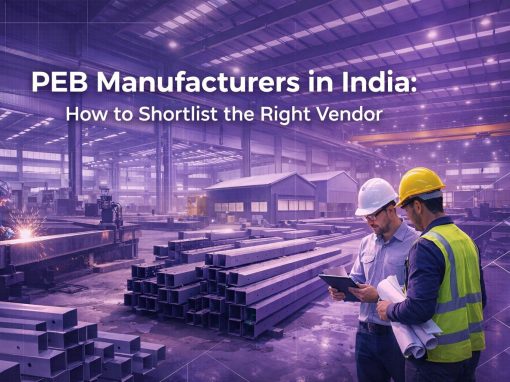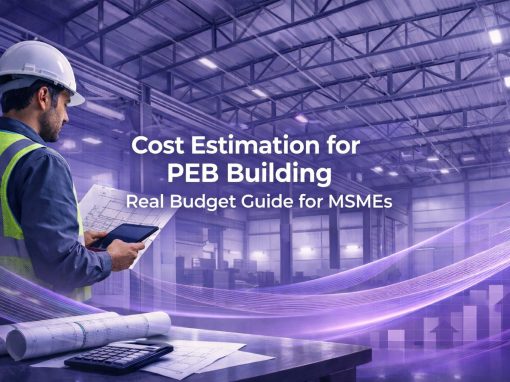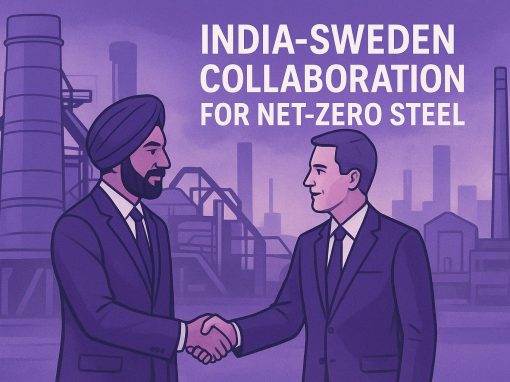Table of Contents
India has officially begun rewarding steelmakers that cut carbon emissions. In 2025, the Ministry of Steel rolled out green steel certificates under its new National Green Steel Taxonomy Framework. Over 25 companies have already received certification, according to Economic Times reports from November 2025. These certificates confirm that a manufacturer’s steel meets verified low-emission standards.
The move is part of a wider plan to make India a global hub for sustainable steel by 2030. Certified producers will soon qualify for government incentives and priority in public procurement. Large players such as Tata Steel and JSW Steel, along with mid-sized firms like Kalyani Steels and Vardhman Special Steels, are among the early beneficiaries.
This article explains the new policy, how green steel is defined, which Indian companies qualify, and what this shift means for buyers, suppliers, and the broader steel market.
Green Steel Policy Context
In 2025, the Ministry of Steel launched the National Green Steel Taxonomy Framework. It gives India’s steel sector a clear system to define and verify low-carbon or green steel. The goal is to help the industry cut emissions and move towards India’s net-zero target by 2070.
What the Taxonomy Does:
- Sets clear rules for what counts as ‘green steel’.
- Measures things like carbon emissions, energy efficiency, and raw-material use.
- Provides a common benchmark for both producers and buyers.
- Creates a transparent, government-approved certification system.
Green-Steel Certificates:
- Companies that meet the criteria receive an official Green Steel Certificate.
- These certificates confirm that their steel meets low-emission standards.
- As of November 2025, about 25 certificates have been issued (Economic Times report).
- Certified firms become eligible for government incentives, such as: preference in public procurement (government contracts) and possible financial incentives or tax benefits under upcoming green industry programmes.
Procurement Plans:
- The Ministry has signalled that by FY 2027–28, government tenders may require or prioritise certified green steel.
- This step will help shift major public projects, roads, railways, housing, towards low-emission materials.
Why It Matters:
- Gives steelmakers and buyers a clear, trusted standard to follow.
- Encourages large companies like Tata Steel and JSW Steel to scale green production.
- Helps mid-sized producers such as Kalyani Steels and Vardhman Special Steels join the green supply chain.
- Prepares MSMEs for future compliance and offers them access to certified, sustainable steel for their own production needs.
What Does ‘Green Steel’ Mean?
Green steel refers to steel produced with significantly lower carbon emissions than traditional methods. In conventional steelmaking, most emissions come from burning coal in blast furnaces. To cut these emissions, the industry is now shifting to cleaner technologies and renewable energy sources.
One key route is the use of Electric Arc Furnaces (EAFs), which melt scrap steel instead of relying on iron ore. When powered by renewable electricity, EAFs can reduce carbon intensity by up to 60–70%. Another major method is Direct Reduced Iron (DRI), which uses green hydrogen or biomass instead of coal to extract iron. This process can nearly eliminate fossil fuel use in primary steelmaking.
Beyond these production methods, some companies are adopting “Book & Claim” systems or creating branded low-emission products. For example, JSW Steel’s “GreenEdge” and Tata Steel’s low-carbon steel lines allow customers to purchase verified low-emission steel with digital certificates that trace carbon savings.
Each of these models supports India’s National Green Steel Taxonomy, ensuring transparency and comparability across producers. Together, these innovations show that green steel is not one technology, but a broad shift from fossil-fuel dependence to verified, low-carbon production across the supply chain.
Top Benefits of ‘Green Steel’ Adoption for Businesses:
- Access to Government Incentives
Businesses using certified green steel can qualify for tax breaks, subsidies, and procurement preferences under India’s new green taxonomy. - Better Market Credibility
Using low-emission materials helps businesses build trust with clients, especially large corporates and export buyers focused on sustainability. - Export Readiness
Green steel adoption aligns with global carbon regulations, helping businesses stay compliant and competitive in international markets. - Lower Energy and Carbon Costs
Sustainable production methods can cut long-term operating costs through energy efficiency and reduced carbon penalties. - Easier Access to Green Finance
Banks and investors increasingly offer better loan terms and funding options to businesses that adopt cleaner, certified steel products.
Government of India Incentives and Eligibility
| Aspect | Details (As of November 2025) |
| Purpose of Green Steel Certificates | Certificates issued under the National Green Steel Taxonomy Framework confirm that a company’s steel meets verified low-emission standards. They serve as the key document for accessing government benefits. |
| Eligibility for Incentives | Only certified producers can claim upcoming benefits under central and state-level green industry schemes. Non-certified steel will not qualify for these incentives. |
| Type of Incentives Available | 1. Direct financial support – grants, interest subsidies, or rebates for new low-emission technologies. 2. Public procurement preference – certified steel to be prioritised in government infrastructure and defence contracts by FY 2027–28. 3. Tax and compliance benefits – faster clearances, lower import duties on green-tech equipment, and possible carbon-credit eligibility. 4. Market visibility – certified firms can label and promote products as verified green steel, attracting sustainability-focused buyers. |
| Certificate Validity & Renewal | Certificates are valid for 12 months, after which companies must reapply with updated production and emission data. This ensures transparency and ongoing compliance with emission benchmarks. |
| Implementation Agency | The Ministry of Steel, working with accredited third-party verifiers and the Bureau of Energy Efficiency (BEE), oversees issuance and monitoring. |
| Industry Impact | The incentive system encourages large producers and MSME suppliers to adopt energy-efficient technologies sooner. It also builds a clear path for green steel to become a mainstream input in India’s construction and manufacturing sectors. |
Eligible Companies and Impact on MSMEs
India’s steel transition is being driven by both major producers and agile mid-sized firms. The following eight companies are leading or early movers in adopting low-carbon technologies, securing green-steel certificates, and positioning themselves to benefit from upcoming government incentives
1) Tata Steel
Tata Steel is India’s largest integrated steelmaker and a market leader in sustainability programmes. The company has published Environmental Product Declarations and gained multiple product-level green certifications (eg. GreenPro) while running low-carbon trials and EPDs for flat products. These steps position Tata to win green steel tenders and related incentives as the taxonomy and procurement rules roll out. Certified output also boosts Tata’s ability to command sustainable-product premiums and long-term public contracts.
Impact on MSMEs: MSMEs that buy from Tata can access verified low-carbon steel without complex auditing. Smaller fabricators and contractors can meet buyer sustainability requirements by sourcing Tata’s certified SKUs, easing compliance and export access.
2) JSW Steel
JSW Steel has launched GreenEdge, a book-and-claim, certificate-based low-carbon steel solution that follows worldsteel chain-of-custody guidance. The brand allows customers to reduce reported Scope-3 emissions via verified certificates while JSW scales EAF and DRI investments. This product and JSW’s decarbonisation plan make the firm an early beneficiary of procurement preference and direct incentives. Buyers seeking traceable low-carbon steel will likely turn to JSW for certificate-backed supplies.
Impact on MSMEs: MSMEs can buy GreenEdge certificates rather than change their own processes. This helps small manufacturers claim lower product emissions quickly and compete for green contracts.
3) Jindal Stainless (Jindal Stainless Ltd)
Jindal Stainless is focusing on renewable energy, recycling and green hydrogen pilots in its stainless operations. The company publishes regular sustainability reports and is investing in technologies that cut Scope-1 and Scope-2 emissions. With explicit green-hydrogen and energy-efficiency projects, Jindal Stainless is well placed to qualify for certificates and incentives as verification systems mature. Certification would help it win green procurement and export markets that demand low-carbon metal.
Impact on MSMEs: Small buyers of stainless products, such as component makers and precision engineers, benefit because certified stainless reduces their supply-chain emissions and improves eligibility for greener orders.
4) SAIL (Steel Authority of India Limited)
SAIL is India’s large public-sector steelmaker. It is upgrading plants, exploring decarbonisation MoUs and working on energy-efficiency projects with international partners. As government procurement rules begin to favour certified green steel, SAIL stands to gain both through direct incentives and from being a preferred supplier to central projects. Public ownership and scale make SAIL a pivotal actor in the state’s green-steel transition.
Impact on MSMEs: Many MSMEs supply to or buy from SAIL-linked projects. If SAIL uses certified steel in government work, downstream MSME contractors and fabricators will need to adapt, but will also see more stable demand for verified low-carbon inputs.
5) Kalyani Steels (Kalyani Group)
Kalyani Steels is a mid-cap steelmaker that media reports list among early certificate recipients. The company has invested in efficient EAF routes and resource optimisation to lower carbon intensity. As incentives and procurement preferences kick in, Kalyani can leverage certification to expand market share, especially in sectors that prefer locally-certified low-carbon steel. Certification also improves its commercial leverage with large infrastructure buyers.
Impact on MSMEs: Regional suppliers and small foundries that source from Kalyani will find it easier to meet client sustainability criteria. Local MSMEs could gain a price or access advantage when buying certified product lines from Kalyani.
6) Vardhman Special Steels
Vardhman Special Steels (VSSL) makes specialty and alloy steels, largely using scrap-fed EAF routes. The firm emphasises recycled inputs and energy efficiency, which lowers its carbon intensity and aligns with the taxonomy’s criteria. As demand for specialised low-carbon steels rises, Vardhman can supply niche industrial segments and benefit from procurement preferences for certified products. Smaller OEMs that need speciality grades may prefer certified suppliers for compliance reasons.
Impact on MSMEs: Precision engineering and auto-component MSMEs that rely on specialty bars will gain by accessing traceable low-carbon alloys from Vardhman, helping them win orders from environmentally conscious buyers.
7) Shree TMT (Shree Group)
Shree TMT is a large TMT bar maker known for product certifications and recent green ratings. Reports indicate the brand has secured green product certifications that reflect energy-efficient production practices. Certification helps Shree TMT compete for construction sector supply to public projects and private firms seeking green materials. This bolsters its standing in regional markets and infrastructure supply chains.
Impact on MSMEs: Contractors, small builders and local fabricators (many of them MSMEs) who buy TMT bars from Shree can meet tender sustainability clauses more easily when bars come with green certification. This reduces paperwork for small buyers.
8) Lloyds Metals & Energy (LMEL)
Lloyds Metals & Energy operates integrated mining, DRI and pellet plants and has implemented low-carbon logistics like a slurry pipeline to cut transport emissions. Its upstream decarbonisation work improves the carbon profile of iron feedstocks and supports a lower-emission steel supply chain. As the taxonomy rewards end-to-end emission reductions, Lloyds will be a strategic supplier for certified iron and pellet inputs.
Impact on MSMEs: MSMEs involved in downstream steel processing benefit if raw material suppliers like Lloyds lower upstream emissions. Cheaper, certified iron and pellets can lower lifecycle emissions for small manufacturers without heavy capital investment.
Industry Implications and Market Impact
The rollout of green-steel certification is expected to reshape competition and pricing in India’s steel market. Companies already producing low-carbon steel, such as Tata Steel and JSW Steel, will gain an early advantage through eligibility for incentives and public procurement preference. Certified products may attract a modest price premium, typically 2–5% higher than conventional steel, reflecting the added cost of cleaner energy, certification, and traceability.
In the short term, this could slightly raise steel prices for end users, especially in infrastructure and construction. However, as more mills adopt electric arc furnaces and renewable power, production costs are expected to stabilise or fall. Non-certified producers may face reduced demand or lower margins as buyers shift towards verified green steel. Overall, prices will likely even out, but carbon efficiency, not scale, will define market advantage in the years ahead.
Possible Challenges and Solutions
| Challenge | Description | Possible Solution |
| Limited Scrap Availability | India lacks enough high-quality steel scrap to support large-scale EAF-based green steel production. | Expand formal scrap collection and recycling systems through the National Scrap Policy and industry partnerships. |
| Green Hydrogen Bottleneck | Green hydrogen remains expensive and limited in supply, slowing low-carbon DRI production. | Fast-track projects under the National Green Hydrogen Mission and provide subsidised renewable power for hydrogen production. |
| High-cost Premium | Green steel costs 2–5% more, making it less competitive for price-sensitive buyers. | Introduce subsidies, concessional green loans, and carbon credit mechanisms to offset higher costs. |
| Verification and Monitoring Gaps | Certification requires accurate emissions tracking and credible audits, still developing in India. | Build digital monitoring platforms and establish independent verification agencies under the Green Steel Taxonomy. |
| MSME Inclusion Risk | Smaller manufacturers may struggle with compliance costs and technical know-how. | Provide cluster-based support, shared testing labs, and simplified certification processes for MSMEs. |
Practical Recommendations for Steel Buyers
- Include certification as a mandatory criterion in RFPs and tenders.
- Pilot “book-and-claim” purchases to support early green steel adoption.
- Engage suppliers early to verify certificate validity and renewal timelines.
- Align procurement cycles with the 12-month certificate validity period.
- Track policy updates from the Ministry of Steel to stay compliant with future mandates.
Conclusion
Green steel incentives are real and Indian companies already investing in low-carbon technologies will be the ones to benefit most. As certification expands, procurement norms will begin to favour verified producers across both public and private sectors.
For MSMEs, aligning early with certified suppliers can secure market access and stability. India’s green steel shift is no longer optional. It is the next competitive edge.
Looking to procure steel?
Tata nexarc helps manufacturers, builders and MSMEs source certified steel products, compare prices, and choose the right grade as per IS codes—with complete traceability and procurement confidence.
FAQs
What is 'green steel'?
What is the National Green Steel Taxonomy Framework?
Who issues green steel certificates?
How long is a green steel certificate valid for?
Which companies are certified or leading the shift?
What are the benefits of 'green steel' certification?
Will green steel cost more?
How does this affect MSMEs?
What challenges remain?
What should buyers or contractors do now?
A product manager with a writer's heart, Anirban leverages his 6 years of experience to empower MSMEs in the business and technology sectors. His time at Tata nexarc honed his skills in crafting informative content tailored to MSME needs. Whether wielding words for business or developing innovative products for both Tata Nexarc and MSMEs, his passion for clear communication and a deep understanding of their challenges shine through.







